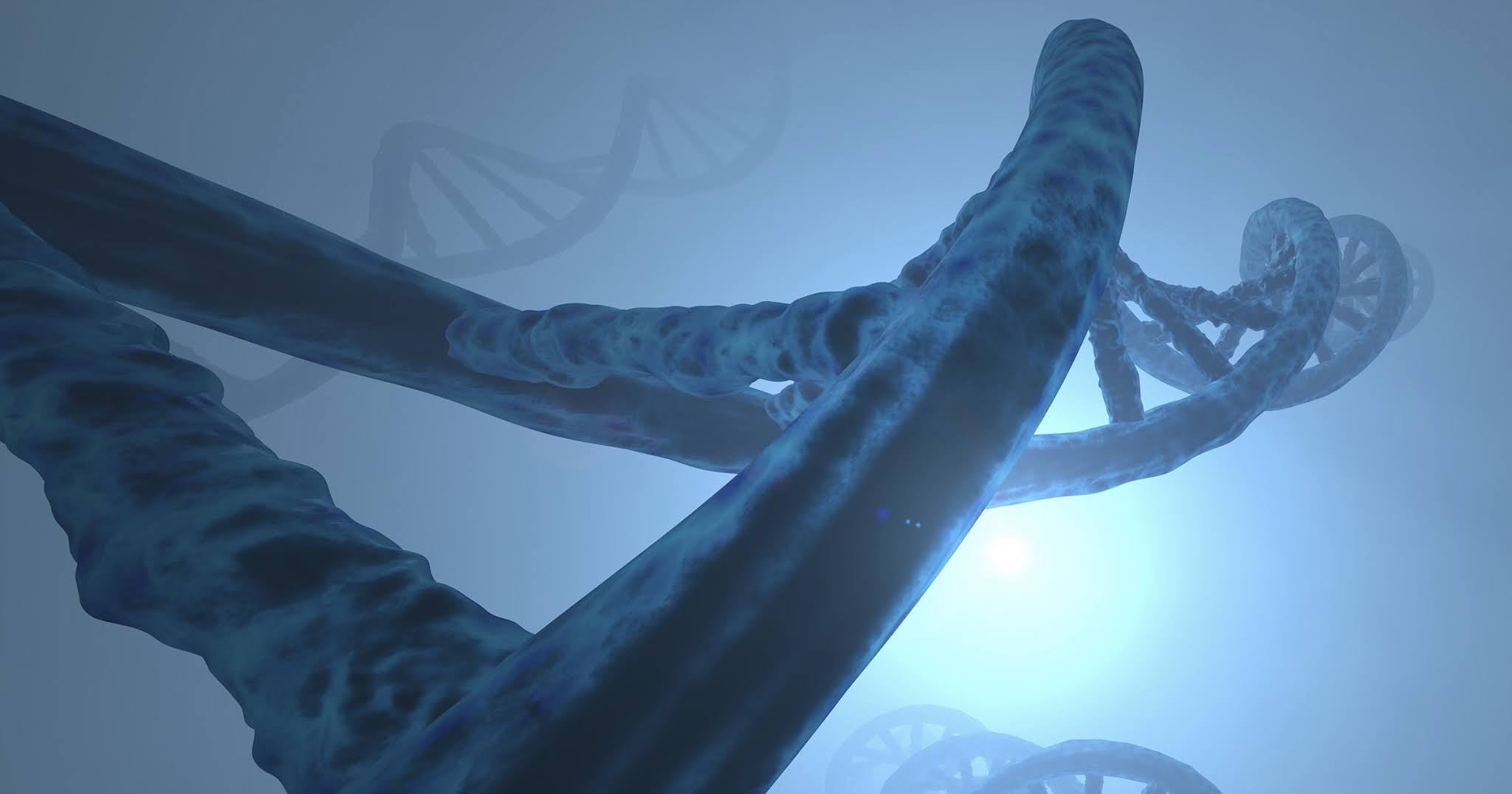Although the DNA helical diameter is only 2 nm, the entire DNA strand in a single cell will stretch roughly 2 meters when completely unwound. The entire DNA strand must fit within the nucleus of a cell, so it must be very tightly packaged to fit. This is accomplished by wrapping the DNA around structural histone proteins, which act as scaffolding for the DNA to be coiled around. The entire structure is called a nucleosome, each of which includes an octamer of histone proteins and 146 to 147 base pairs of DNA. The millions of nucleosomes tightly coil the continuous DNA strand into chromatin which is further condensed into the chromosome classically visualized during cell division.
The nucleosome structure was first described in 1974 by Roger Kornberg who, with evidence from biochemical experiments, X-ray diffraction studies, and electron microscopy images, proposed the nucleosome was comprised of repeating units of eight histone proteins and about 200 DNA base pairs. In the same year, Markus Noll gave a visually interpretable result to understand how DNA wraps around the nucleosomes. The results of his experiments showed that DNA wrapped was cleaved when exposed to DNAse I, which suggested that the enzyme must have had access to the DNA. The results of this experiment favored the theory that DNA was wound on the outside of the nucleosome unit and supported the nucleosome structure proposed by Kornberg, with each nucleosome consisting of approximately 200 DNA base pairs.
So how do you package one meter of information content into a space 1/100,000 that size? Very carefully and quite ingeniously. The storage of DNA is very much like hierarchical file systems on Windows and Linux desktop computers compressed into a .zip file. In the same manner that there are folders within folders within folders in a desktop computer, with the actual files at the terminal level, individual genes within a DNA molecule are equivalent to “files” that in this case specify the building of a protein needed for the cell to function. DNA packaging is far more complex, however, with several levels of packaging into a highly compressed and compact structure called chromatin. Essentially, there are three orders of DNA packaging: the first order is the nucleosome, the second order is the solenoid fiber, and the third order is the scaffold loop chromatids chromosome. The diagram below demonstrates the levels of packaging.
The first level of packaging of DNA is where the double-stranded DNA is wrapped around spools of histone, a family of positively charged proteins that function primarily in packaging DNA, to form nucleosomes, creating the appearance of “beads” on a string. The nucleosomes themselves are then coiled into a 10 nm (10 billionths of a meter) fiber. Each nucleosome “core” consists of eight histone molecules. The nucleosomes are then further folded into the second order supercoiled solenoid fiber, which is 30 nm in width. The third order is the forming of looped domains of solenoid fibers that average 300 nm in width which are then further compressed down to 250 nm to form chromatin fiber. The chromatin fibers are further folded into 700 nm chromatids, and finally we have the highest order of structure that forms the characteristic shape of a chromosome which is 1400 nm in width as seen above. Thus, the general order of packaging is:
DNA › nucleosome › solenoid › chromatin fiber › chromatid › chromosome
Interestingly, there are companies that recognize the genius of DNA and its packaging model who are investigating using DNA molecules as a means of creating molecular-level archival data storage to solve the problem of an ever-increasing amount of digital data that is surpassing the amount of physical storage available using modern magnetic and optical media. For example, tech giant Microsoft is currently engaged in this research, noting the following on their website: “Using DNA to archive data is an attractive possibility because it is extremely dense (up to about 1 exabyte per cubic millimeter) and durable (half-life of over 500 years).” When one considers the fact that the world’s finest software engineers look to the DNA packaging topology to dramatically increase storage capability by orders of magnitude, it is reasonable to conclude that the packaging and processing of DNA is the product of a purposeful designer with a degree of engineering knowledge simply unmatched by humans.


Comments
Post a Comment